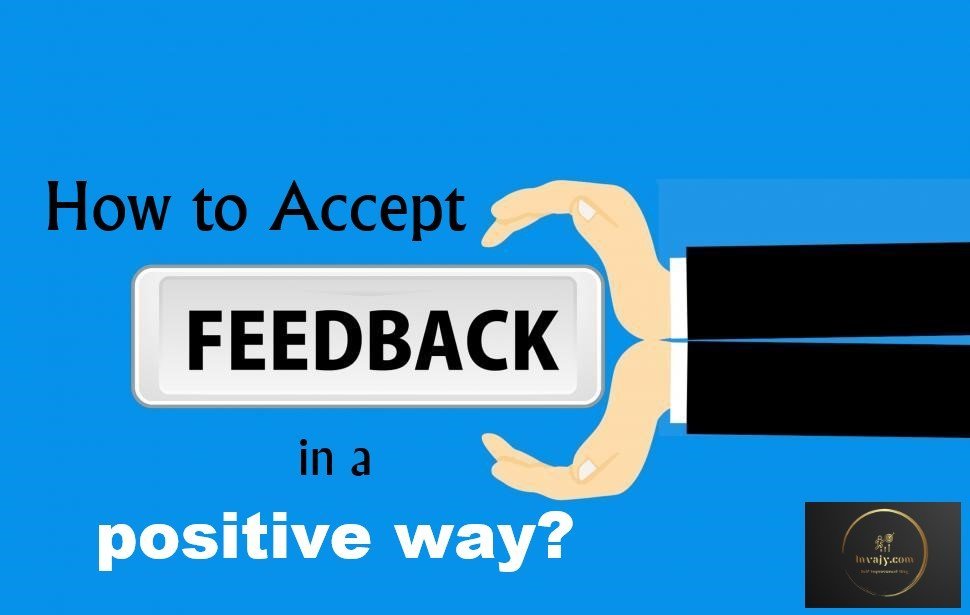How to Accept Feedback in a Positive Way?
Turn feedback into your secret weapon: listen actively, stay open-minded, and embrace growth. It’s the key to unlocking your potential!

Feedback is invaluable and learning to accept and implement feedback boosts your confidence and increases self-awareness. Feedback helps you learn that there are areas where you can improve. Accepting feedback isn’t always easy, but it’s possible to make the process of receiving criticism feel more productive and less personal. Fear of criticism is a common but manageable reaction. Accept welcome remarks, criticism and feedback more gracefully with these tips without taking them personally:
Acknowledge Tough Love
One of the most underrated professional skills is the ability to embrace tough love. While acquiring knowledge is relatively easy in the age of information, accepting constructive criticism requires emotional strength and maturity. Many people react to or shy away from uncomfortable truths, but if you can’t handle honest feedback, eventually people will stop offering it — and with it, your opportunities for growth may vanish.
Those who evolve the fastest in their careers are often the ones who welcome feedback with open minds, not fragile egos. They don’t just hear the truth — they reflect on it, act on it, and use it as fuel for personal and professional development.
Accept feedback positively
Receiving constructive criticism can make people feel defensive or emotional. Accept the feedback positively, regardless to whether it is negative or positive, without getting over-emotional. It’s extremely important to look at the feedback as a learning tool. Focus on listening during the feedback sessions. Spend time digesting the feedback before responding. A little time and separation from the initial comments will go a long way. You may use positive comments while responding, for an example – “Thanks for your feedback. I am glad to see that you are interested in what I am doing.” or “Thanks for looking at my presentation and for your advice.”
No Explanations
Don’t explain away negative feedback. If you will minimize constructive criticism or feedback, you will never learn from it and you will send the message that you don’t respect the process or the person giving you the feedback. You will be able to absorb more information if you will concentrate on listening and understanding rather than being defensive and focusing on your response.
Be aware of your non-verbal responses
You should also be aware about your non-verbal responses. Your body language and tone of voice often speak louder than words. Try to avoid putting up barriers. If you look distracted and bored, that sends a negative message as well. Attentiveness, on the other hand, indicates that you value what someone has to say and puts both of you at ease.

Keep the feedback in perspective
Keep all feedback in perspective. Use feedback as a guide to determine if you should repeat of change specific actions, not as something to dwell on. By dwelling on the negative, you can turn a simple comment on one specific act into criticism of your entire job performance or even your life!
Be receptive
Be open with a growth mindset. You should be receptive to new ideas and different opinions. There are always better ways of doing the same things. Others may have a completely different viewpoint on a given topic. You may learn something worthwhile.
Showing a receptive approach also assures others that you are open to feedback and growth. You may get better insights for self-improvement. Rather than avoiding feedback, turn every feedback in to a useful encounter.
Ask to Probe
You need feedback to learn and grow. You may ask questions to probe more deeply. For example if the feedback has been given to be more assertive or more proactive or more of a team player. You may have to probe for specifics like “Can you explain what you mean? How could I have been more assertive just now?” and What kinds of things should I do to be more assertive going forward?
Focus on the future
Ask what you can do better going forward as opposed to what you did wrong in the past. When you ask people what you can do to be more effective in the future, they tend to be more honest. They see your positive approach for self improvement and give more realistic feedback.
Evaluate the feedback
Identify and retain useful feedback that can help you to improve. Reject feedback that is irrelevant or can not be applied; but this rejection should not be communicated to criticizer in any form of communication i.e. verbal, behavioral or through body language. Categorizing in useful and irrelevant will help to identify the improvement areas.
Re-assess the feedback
Go back and re-assess the feedback at a later time, once the feedback session or conversation is over. Think about what was said. Check that you have taken into account all the constructive comments and remarks.
Also re-assess the ones you rejected to see if, with the benefit of hindsight, they appear to be more relevant. If you disagree with the feedback, you may also consider asking for a second opinion from someone else.
Redirect and Reinforce
Feedback always requires two outcomes out of the process. First is redirection, if the behavior, action or working methodology requires change. Second one is reinforcement if behavior, action or working methodology is well appreciated. Since, you have reassessed the feedback; you will be in the position to take action as redirection and reinforcement.
That’s all from my side in this article on how to accept feedback. Be sure to follow above tips if you would like to take feedback in a more positive light.
Thank you for reading this. Over to you now, please let us know your tips to accept feedback in a positive way. Share them in the comment section, they are much appreciated.
If you have liked this article, please share it with your friends and relatives at your favorite social networks i.e. Facebook, Instagram, Twitter, Pinterest and LinkedIn.






